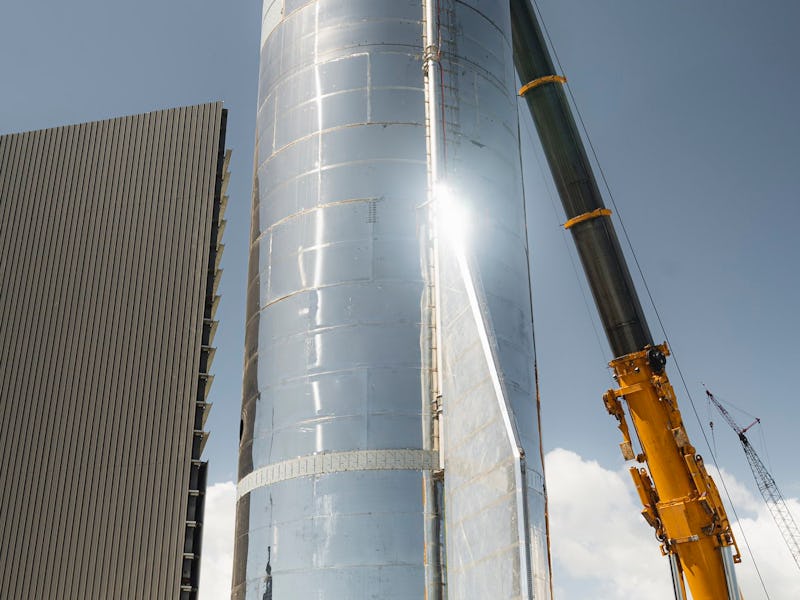SpaceX Starship: Elon Musk shares rapid progress ahead of big reveal event
The giant rocket is coming together.

SpaceX’s Starship, the vehicle designed to send humans to the surface of Mars, is coming together at speed.
Ahead of a presentation Saturday that will divulge further details, CEO Elon Musk shared new images and details of the work-in-progress Mk.1 prototype. The construction, taking place at the Boca Chica launch facility in Texas, is expected to be the first full-size prototype of the ship designed to explore the solar system.
The Starship is the most ambitious rocket SpaceX has ever built. It uses the Raptor engine, which uses liquid oxygen and methane as its fuel, that will enable astronauts to set up propellant depots on other planets to harvest resources and refuel. The Starship’s initial missions are expected to cover a satellite launch in 2021 and a trip around the moon in 2023, but from there the company is aiming to establish a city on Mars and potentially venture out further by establishing propellant depots along the way.
It all starts with the Starship prototype, set to be unveiled on the anniversary of SpaceX reaching orbit for the first time back in 2008.
SpaceX Starship: How progress has rapidly advanced
SpaceX has made rapid advancements in the week leading up to the event. On Monday, Musk shared video of the raceway and flap hinge aero covers. Musk also showed an image of the lower half of the Starship at night, with three Raptor engines already installed.
Note that the ship is just one part of the vehicle designed to leave the Earth. The final construction will include the Super Heavy, a first-stage booster that brings the whole construction to a height of nearly 400 feet. The whole system is expected to use around 40 Raptor engines to provide the needed extra boost.
The lower half waiting for the final parts.
By Thursday, the team had started lifting this lower section:
Lifting the lower section.
The Mk.1 ship has a mass of around 200 tons dry and 1,400 tons wet. By the fourth or fifth iteration, SpaceX is hoping to reach 120 tons of mass. Including the maximum payload, the total stack is expected to offer a mass of 5,000 tons. The entire Mk.1 stack is expected to measure 50 meters tall, or 164 feet.
The first prototype is expected to use six landing legs, Musk explained on Thursday. That includes two windward, two leeward, and one for each of the three fins. Musk stated that this will provide redundancy for landing on unimproved surfaces, an ideal feature for a rocket expected to traverse the solar system.
But where is the top half? Musk explained that this component would be fitted later. The group did not close out the ship as it was still building hardware into the top of the fairing, which covered components like composite pressure vessels and large batteries. These have been placed in the nose tip, Musk explained, to balance with the engines and rear fins.
Shiny!
The ship uses four flaps to control pitch, roll and yaw. It’s unclear how SpaceX is moving the flaps, but the company was spotted installing Tesla batteries into the ship. Musk’s electric car company, it seems, is helping to benefit his other companies.
“It would be pretty embarrassing to use a non-Tesla battery!” Musk wrote.
The presentation is set to cover a number of areas. Musk has hinted that it could include details about how SpaceX plans to capture carbon and create the Raptor fuel, which could help bring rocket flights to zero-carbon. He has also suggested the presentation could detail its inter-Earth transport plans, which would use the Starship to transfer between major cities in less than an hour.
When will the first prototype fly? “Hopefully within a month or so,” Musk declared.
With a big list of ambitious launches planned, the Starship team will be hoping for a smooth first launch.